ten centuries in the making
A medieval history
St. Michael and All Angels church boasts some of the finest medieval stained glass in England and although the exact date when it was founded is unknown, it seems likely that a stone Church with a nave and chancel existed on the site prior to the Norman invasion in 1066.
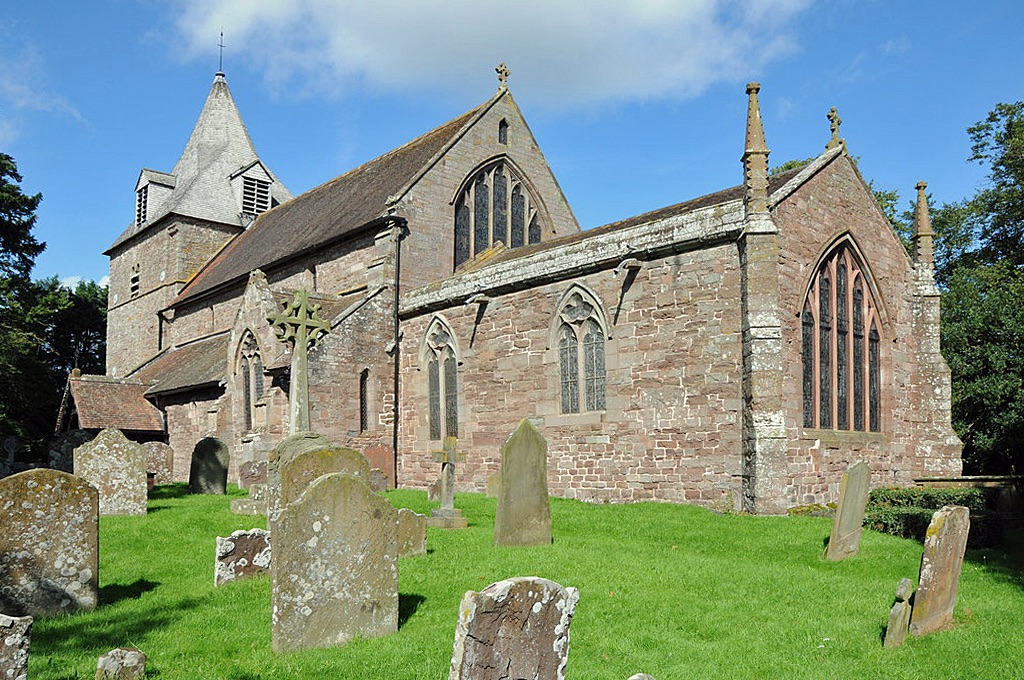
The squat, rectangular tower was added in the 12th century, possibly by the Bishop of Hereford where most likely an earlier tower existed, based on the Saxon style of windows and the shape of the tower.
The Church is described as having been rebuilt a number times in the centurys that followed, with the the tower thought to have been erected around the 11th century. The nave, aisles and chancel were added some two or three centuries later and at some point during the 13th century, the nave was heightened and widened.
The font is also believed to be from the same period with the later addition of a Victorian bowl. The pulpit is of a wineglass design, boasting wonderfully carved wooden panels and in the chancel is a 14th-century sedilia composed of three bays
During the mid 19th century, renovations were carried out on the building and under old plaster, traces of rich patterns of stars and stripes were found. The Church was finally re-opened in December 1859 just in time to celebrate Christmas.
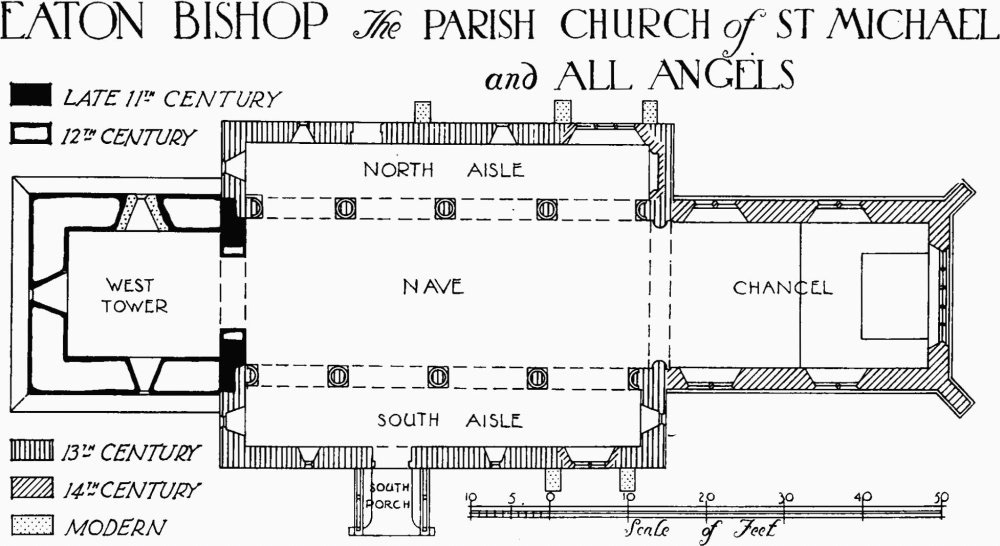
spectacular stained glass wonder
A highlight of St. Michael & All Angels Church is without doubt the wonderful medieval stained glass of the chancel. The east window is composed of five vertical lights and diminishes in height from the centre panel. The glass adorning the windows was created between the years 1320-1340, and was probably made in France, but designed and assembled locally.
During the second world war, the remarkable examples of medieval glass windows that are found in the church were removed for safekeeping and stored in the nearby vicarage.

The leftmost (north) window is centred on a figure of a Madonna and Child. Next comes St Michael weighing souls. The centre window depicts a Bishop, thought to be Walther, Bishop of Hereford, to whom the manor of Eaton was given by William the Conqueror. An alternative interpretation is that the bishop figure represents St Barnabas. The next window shows the Archangel Gabriel, and the final (southernmost) window depicts the Head of Christ.
At the base of the east windows are placed 'donor panels'. These extensions of the main window scenes are intended to commemorate the person or organizations who paid for each window. One donor panel has the word 'Cantor', a reference perhaps to Adam de Monmouth, cantor at Hereford Cathedral, who may have been responsible for the window.
The stained glass at St.Michael & all Angels is an extraordinary medieval achievment and we invite you to come along to see something quite extraoridnary.
On a more modern note, you may be struck by a large naval ensign (flag) hung at the west end of the nave. This was flown by the HMS Alcantara during action in the south Atlantic in 1940
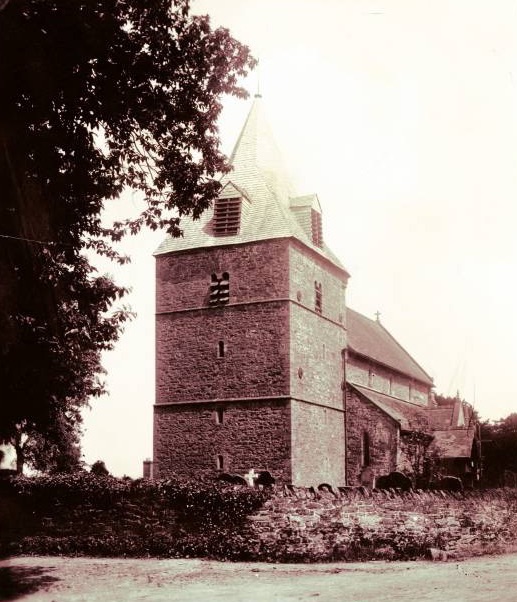
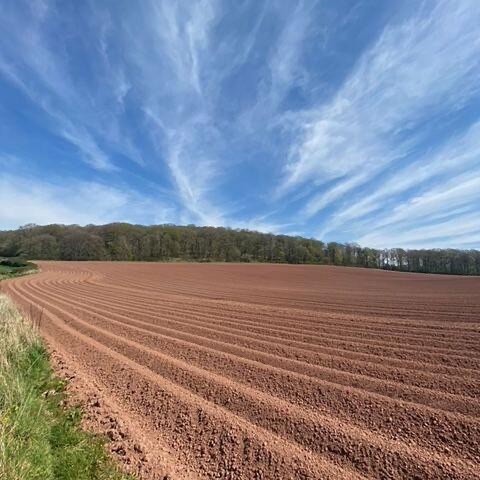
Set in the spectactular rural downlands of the Wye Valley, St Michael & All Angels offers a welcome rest for visitors
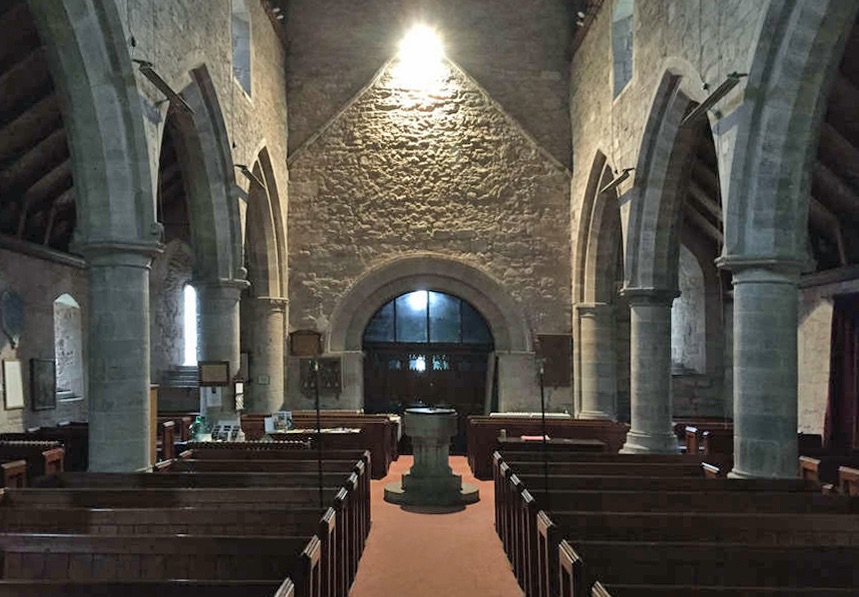
The Church interior offers an insight to architect style and design spanning more than 10 Centuries
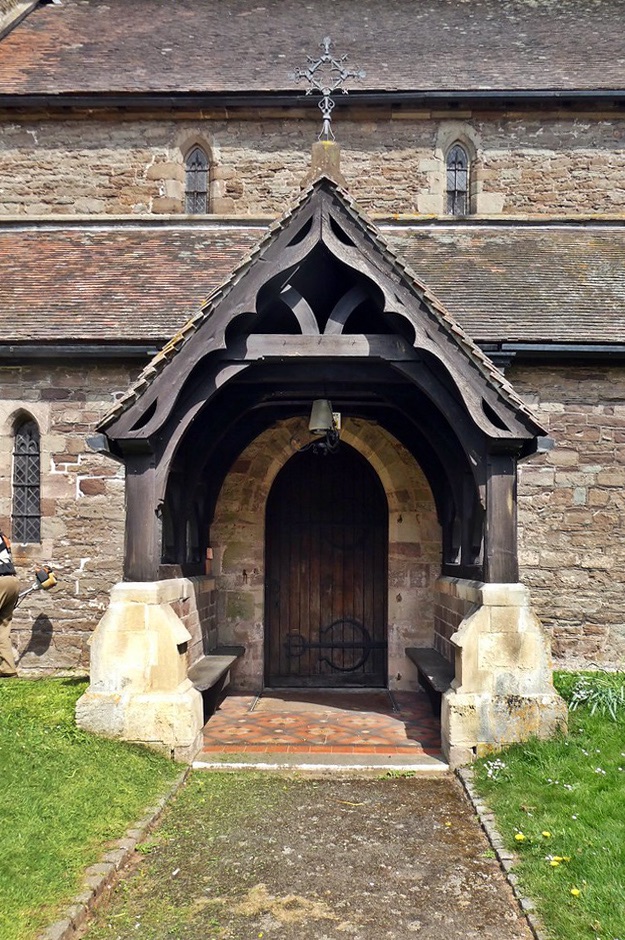
The south porch leads the visitor into the spectacular nave and a wealth of medieval glass windows